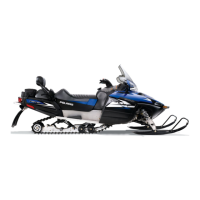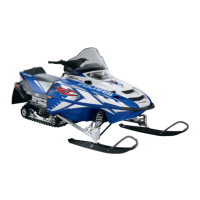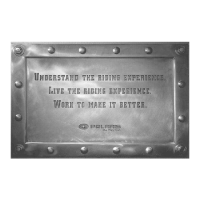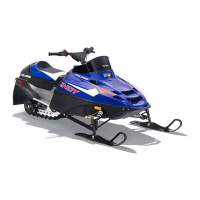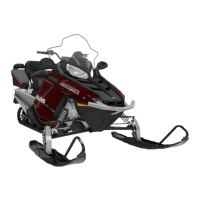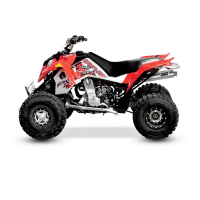6.10
Final Drive and Brakes
BRAKE SYSTEM
Overview
The Polaris snowmobile hydraulic brake system consists of the
following components or assemblies: brake lever, master
cylinder, hydraulic hose, brake caliper (slave cylinder), brake
pads, and a brake disc which is secured to the drive line.
When the hand activated brake lever (A) is applied, it contacts
a piston (B) within the master cylinder. As the master cylinder
piston moves inward it closes a small opening called a
compensating port (C) within the cylinder and starts to build
pressure within the brake system. As the pressure within the
system is increased, the pistons (D) located in the brake caliper
move toward the disc and applies pressure to the moveable
brake pads. As the lever pressure is increased, the braking effect
is increased.
The friction applied to the brake pads will cause the pads to
wear. As the pads wear, the piston within the caliper self-adjusts
and moves further outward.
Brake fluid level is critical to proper system operation. A low
fluid level allows air to enter the system causing the brakes to
feel spongy.
Compensating Port
Located within the master cylinder is a small compensating port
(C) which is opened and closed by the master cylinder piston
assembly. The port is open when the brake lever is released and
the piston is outward. As the temperature within the hydraulic
system changes, this port compensates for fluid expansion
caused by heat, or contraction caused by cooling. During system
service, be sure this port is open. Due to the high temperatures
created within the system during heavy braking, it is very
important that the master cylinder reservoir have adequate space
to allow for the brake fluid to expand. Master cylinder reservoirs
should be filled to the top of the fluid level mark on the inside
of the reservoir, 1/4" - 5/16" (.6 -.8 cm) below lip of reservoir
opening.
This system also incorporates a diaphragm (E) as part of the
cover gasket and a vent port (on cover) located between the
gasket and the cover. The combination diaphragm and vent
allow for the air above the fluid to equalize pressure as the fluid
expands or contracts. Be sure the vent is open and allowed to
function. If the reservoir is overfilled or the diaphragm vent is
plugged, the expanding fluid may build pressure in the brake
system and lead to brake failure.
A
B
E
C
D
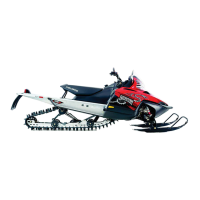
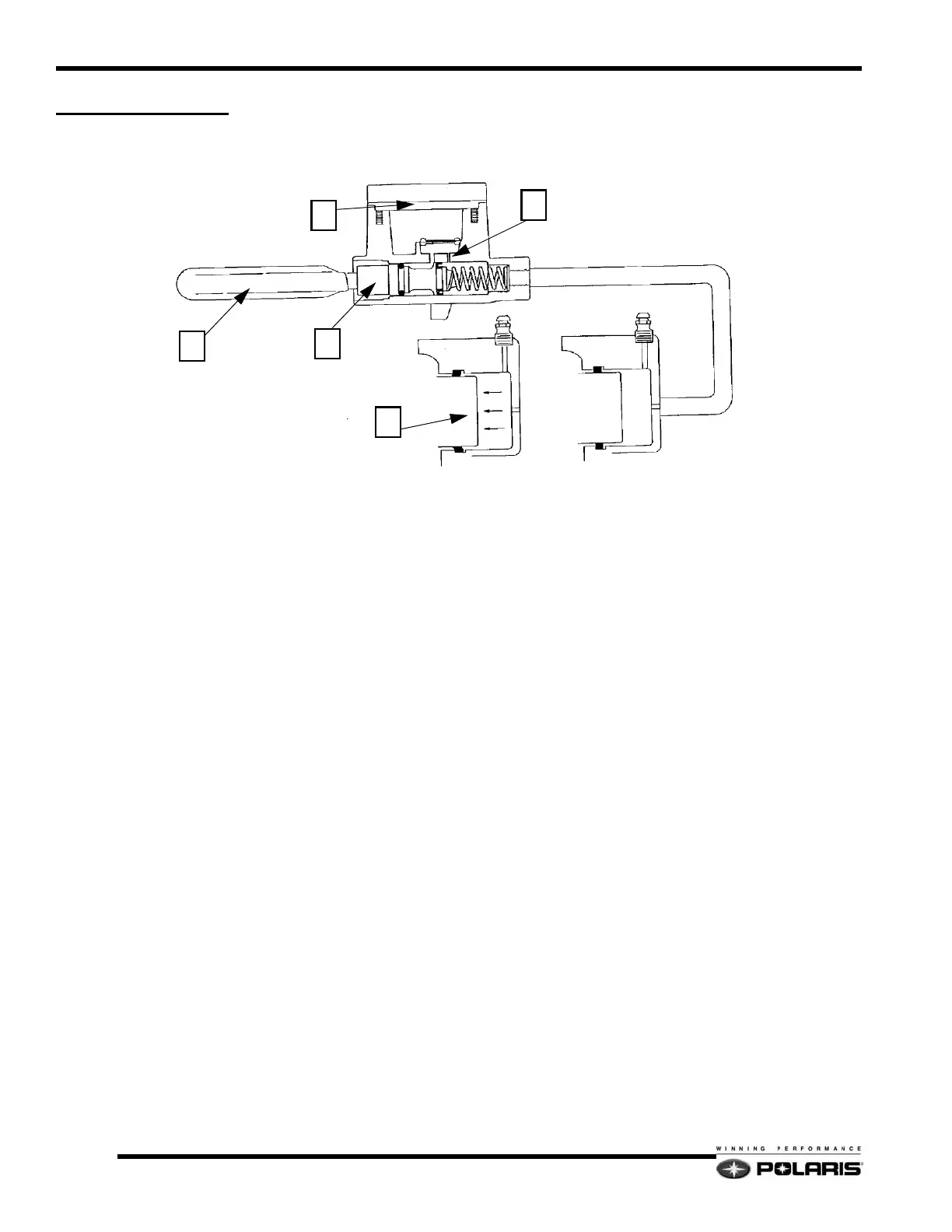